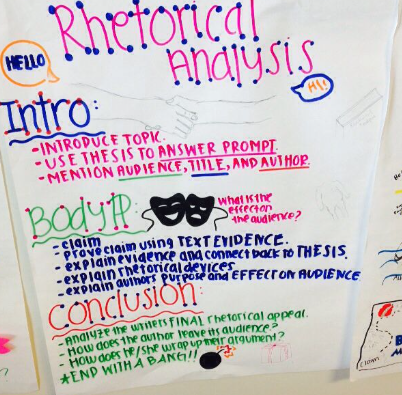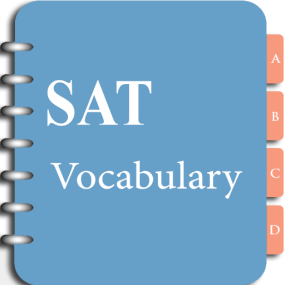Dạng câu hỏi
Các em sẽ được đưa ra một số các ghi chú và yêu cầu như sau:
While researching a topic, a student has taken the following notes:
- Maika'i Tubbs is a Native Hawaiian sculptor and installation artist.
- His work has been shown in the United States, Canada, Japan, and Germany, among other places.
- Many of his sculptures feature discarded objects.
- His work Erasure (2008) includes discarded audiocassette tapes and magnets.
- His work Home Grown (2009) includes discarded pushpins, plastic plates and forks, and wood.
The student wants to emphasize a similarity between the two works. Which choice most effectively uses relevant information from the notes to accomplish this goal?
A. Erasure (2008) uses discarded objects such as audiocassette tapes and magnets; Home Grown (2009), however, includes pushpins, plastic plates and forks, and wood.
B. Like many of Tubbs's sculptures, both Erasure and Home Grown include discarded objects: Erasure uses audiocassette tapes, and Home Grown uses plastic forks.
C. Tubbs's work, which often features discarded objects, has been shown both within the United States and abroad.
D. Tubbs completed Erasure in 2008 and Home Grown in 2009.

Để xử lý được dạng câu hỏi này, các em cần nắm chắc:
- Cấu trúc câu hỏi
- Cách xử lý câu hỏi
- Tips có thể áp dụng.
Cấu trúc câu hỏi
Dạng câu hỏi rhetorical synthesis sẽ có cấu trúc giống nhau bao gồm:
- Lời giới thiệu
- Các thông tin dưới dạng gạch đầu dòng
- Yêu cầu câu hỏi
- Các đáp án
Các em thường sẽ chú ý đến các thông tin ở các gạch đầu dòng đầu tiên. Tuy nhiên, thay vào đó chúng ta nên tập trung vào yêu cầu câu hỏi. Yêu cầu câu hỏi sẽ giúp các em xác định mục tiêu để tìm ra câu trả lời.
Cách xử lý dạng câu hỏi Rhetorical synthesis
Bước 1: Xác định mục tiêu
Các em nên bắt đầu bằng cách đọc yêu cầu câu hỏi. Yêu cầu này sẽ được nêu ra cụ thể, rõ ràng. Nếu các em cảm thấy phân vân trước yêu cầu đó, các em có thể đọc thêm thông tin ở các gạch đầu dòng, nhưng sẽ không cần phải hiểu tất cả những gạch đầu dòng đó.
Bước 2: Kiểm tra các đáp án
Tất cả các đáp án sẽ bao gồm một câu thể hiện chính xác thông tin từ các gạch đầu dòng và chúng ta không cần xác định xem các câu có lỗi ngữ pháp hay không. Chúng ta chỉ cần tập trung vào yêu cầu câu hỏi thôi.
Các em hãy đọc qua từng đáp án và tự hỏi "Đáp án này có đáp ứng được yêu cầu trong câu hỏi không?" Nếu câu trả lời là không, hãy loại bỏ đáp án đó.
Bước 3: Chọn lựa chọn phù hợp
Khi các em đã đọc qua từng đáp án, các em sẽ thấy rằng chỉ có một đáp án đúng nhất với yêu cầu trong câu hỏi.
.png)
Quay lại ví dụ ban đầu:
While researching a topic, a student has taken the following notes:
- Maika'i Tubbs is a Native Hawaiian sculptor and installation artist.
- His work has been shown in the United States, Canada, Japan, and Germany, among other places.
- Many of his sculptures feature discarded objects.
- His work Erasure (2008) includes discarded audiocassette tapes and magnets.
- His work Home Grown (2009) includes discarded pushpins, plastic plates and forks, and wood.
The student wants to emphasize a similarity between the two works. Which choice most effectively uses relevant information from the notes to accomplish this goal?
→ Bước 1: Yêu cầu của đề là “The student wants to emphasize a similarity between the two works.” nhấn mạnh vào “similarity”
→ Bước 2: Chúng ta sẽ đọc từng đáp án:
Erasure (2008) uses discarded objects such as audiocassette tapes and magnets; Home Grown (2009), however, includes pushpins, plastic plates and forks, and wood.
Like many of Tubbs's sculptures, both Erasure and Home Grown include discarded objects: Erasure uses audiocassette tapes, and Home Grown uses plastic forks.
Tubbs's work, which often features discarded objects, has been shown both within the United States and abroad.
Tubbs completed Erasure in 2008 and Home Grown in 2009.
→ Bước 3: Yêu cầu đề bài là sự giống nhau “similarity” vậy đáp án là
B. Like many of Tubbs's sculptures, both Erasure and Home Grown include discarded objects: Erasure uses audiocassette tapes, and Home Grown uses plastic forks.
Một số mẹo cần chú ý
Đơn giản hóa yêu cầu
Các em có thể đơn giản hóa yêu cầu câu hỏi để dễ dàng tìm ra đáp án hơn.
VD: Nếu câu hỏi muốn "nhấn mạnh sự khác biệt giữa điều X và điều Y ", chúng ta có thể đơn giản hóa yêu cầu của mình thành "sự khác biệt".
Hãy xem xét kỹ các đáp án
Đừng dễ dàng chọn những đáp án "đại loại" hoặc "gần như" đáp ứng yêu cầu câu hỏi. Nếu một đáp án không hoàn toàn giải quyết được tất cả các phần của yêu cầu, các em có thể loại bỏ nó.
Bỏ qua ngữ pháp
Tất cả các đáp án sẽ được viết đúng ngữ pháp. Các em hãy đọc các đáp án dựa trên thông tin và bỏ qua việc kiểm tra ngữ pháp của nó nhé!
Bài tập
While researching a topic, a student has taken the following notes:
- Marine biologist Camille Jazmin Gaynus studies coral reefs.
- Coral reefs are vital underwater ecosystems that provide habitats to 25% of all marine species.
- Reefs can include up to 8,000 species of fish, such as toadfish, seahorses, and clown triggerfish.
- The Amazon Reef is a coral reef in Brazil.
- It is one of the largest known reefs in the world.
The student wants to introduce the scientist and her field of study to a new audience. Which choice most effectively uses relevant information from the notes to accomplish this goal?
A. Located in Brazil, the Amazon Reef is one of the largest known coral reefs in the world.
B. Marine biologist Camille Jazmin Gaynus studies coral reefs, vital underwater ecosystems that provide homes to 25% of all marine species.
C. Providing homes to 25% of all marine species, including up to 8,000 species of fish, coral reefs are vital underwater ecosystems and thus of great interest to marine biologists.
D. As Camille Jazmin Gaynus knows well, coral reefs are vital underwater ecosystems, providing homes to thousands of species of fish.
Đáp án: B




.png)

Trần Đình Quang (1560 SAT, THPT Chuyên Khoa Học tự nhiên) Trải nghiệm học SAT với TOEFL, con chỉ biết diễn tả bằng 3 từ thôi: Quá tuyệt vời Con chưa từng thấy ai hiểu biết mà vẫn vô cùng quan tâm và biết lắng nghe, chia sẻ như cô Vân Anh. Kể cả sau 3 năm rồi, con vẫn cảm thấy rất an toàn khi luôn có 1 cô giáo nhiệt tình và thông thái như cô ở gần bên. "You are always there, teacher, and I don't really know how much I appreciate your help and guidance".